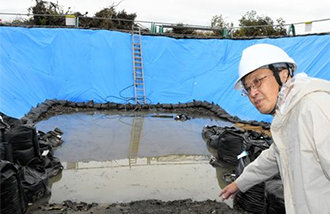Domestic Demand and Exports, `Whole Red Signs`
Domestic Demand and Exports, `Whole Red Signs`
Posted October. 29, 2002 22:49,
Such as the production and consumption which leaded a growth of Korean economy for several years, a business for domestic demand has gone down. Also, the export competitiveness has dropped.
According to the trend of industrial activities of September published by Korea National Statistical Office on October 29, such as the production, consumption and facility investment which is the key domestic demand index, the major index increase rates related to the domestic demand stayed all at below 4%.
▽Signs of Consumption Shrinkage Activation 〓 The production of September increased just by 3.4% over the same period of last year. It is the lowest increase rate after 7 months from February(-2.7%). Excluding a semiconductor, the production of September dropped to -2.4%.
Other vehicles and motorcars showed the decrease of 25.5% and 5.4% respectively. However, the semiconductor increased and office equipment increased by 18.1% and 15.8% respectively.
A shipment stayed at 2.9% increase, the lowest value after October (-0.9%). The shipment of domestic demand decreased by 2.9%, but the exports shipment increased by 8.2%.
As a representative consumption index, Wholesale and retail trade index just increased by 2.9% owing to a slowdown in the motorcar trade. It means that the consumption shrinkage has been activated by the lowest increase rate after the lapse of 19 months from last February (1.6%). The shipment of domestic consumers goods stayed at the increase of 0.3%.
The facility investment increased by 2.8% owing to the investment on telecom equipment. The construction index indicating the construction results showed an inactivity of public ordering construction results. Also, owing to the decrease of the private ordering construction results, it decreased by 10.2%.
The inventory rate of September was 69.7% increased by 0.6% over the last month. On the other hand, the average operation rate of manufacturing industry was 74.6%, decreased by 2.4%.
Kim Min-Gyeong, the head of economic statistics department, NSO said, The industrial activities of September showed the slowdown of the production and consumption increase rate due to decreasing working days because of Chuseok holiday. However, we have to watch whether the business is in the activated falling situation.
▽Worry on Exports Outlook 〓 As the result of investigations, the price competitiveness of Korean export items was behind over the major competitors. It is uneasy about the export outlook.
Trade Laboratory under Korea International Trade Association (KITA) analyzed 7 factors determining the price competitiveness of export items for the first half of the year (January to June) for 5 countries of Korea, Japan, China, Taiwan and Singapore on October 29. As the result, Korea fell behind in the competitiveness of 6 fields except the labor productivity.
The won/dollar exchange rate of the first half of the year was similar to the same period of last year. On the other hand, the currency value of Japan, Taiwan and Singapore dropped by 2∼8%. It means the price competitiveness of Korean products was weakened in the international market.
In terms of the wage increase rate of manufacturing industry, Korea was 9.0% higher than Japan, Taiwan and Singapore for the first half year. It showed the strong increase pressure of the manufacturing costs. The loan rate was 6.8% per annum, higher than Taiwan, Singapore and China.
But, the investigation said that the increase rate of Korean labor productivity was 4% for the first half year. It means that Korea is in advantageous position over Japan and Singapore.
Kwang-Hyun Kim Mi-Kyung Jung kkh@donga.com mickey@donga.com







